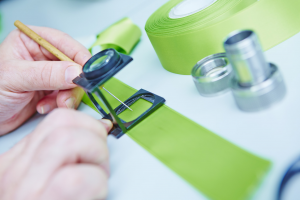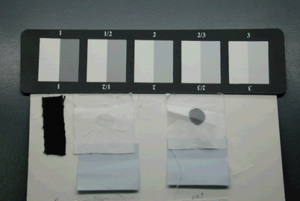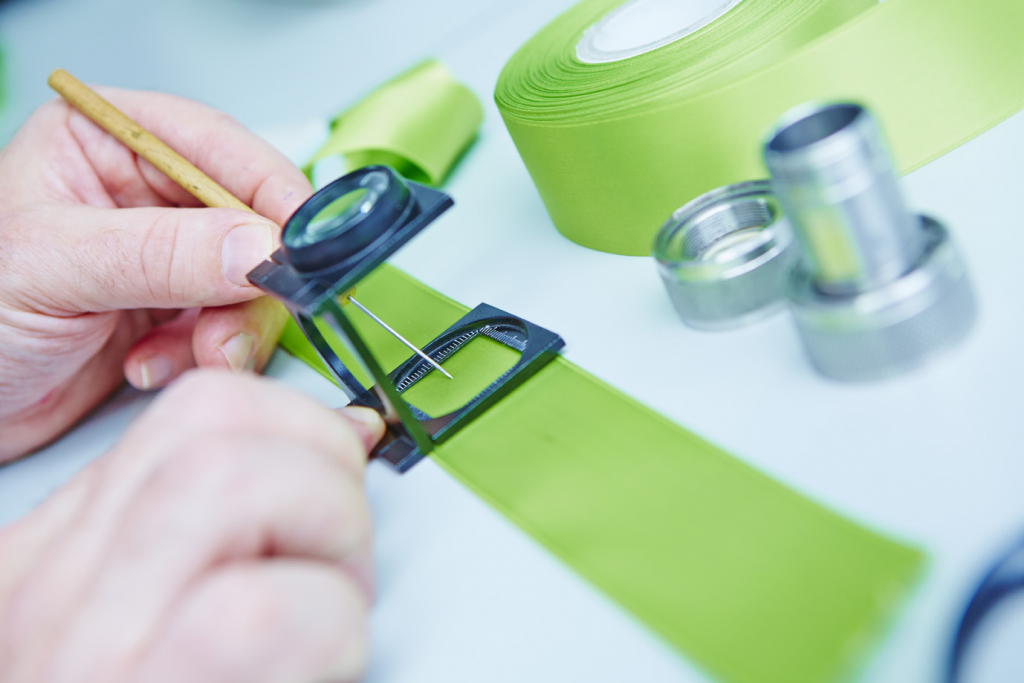Tests for General Fabric Information:
Following textile basic tests are used to gain general fabric information. See the list of basic tests of textile fabric below for what we need know for General Fabric Testing.
- Fiber Content Test: The test is required to know the content or ingredient of provided fabric. Following info is required during this test method.
- Single Fiber (A fiber contains one ingredient only)
- Blended Fiber (A fiber consists of more than one ingredient)
- Fabric Weight Test: It’s required to figure out the weight of fabric. We use different weight method for different fabrics. See below for your reference:
- GSM
- Oz
Used to determine the fineness of yarn, to express weather the yarn is thick or thin.
- EPI & PPI Check:
Used to determine the fabric ends per inch & pick per inch.

5. Dimensional Stability (DS):
Supposed, you bought a shirt from a shop as per your required size. But after washing, it became smaller or larger than your required size. Then you’ll be upset. So, to avoid this problem, fabric requires Dimensional Stability Test. Please note, below topics belongs to dimensional Stability Test.
- DS to Washing (shrinkage) (needs for checking measurements of garment after washing)
- DS to Dry Cleaning (needs to check measurements of garment after dry cleaning)
- Spirality / Skew / Torque (requires to check twisted deformation of garments after dry cleaning & washing)
- Garments Appearance after Washing / Dry Cleaning (requires to check shape of garments after wash)
Fabric Shrinkage Test Formulas are as follows:
Shrinkage % = (Before Wash – After Wash) / Before Wash x 100
Twisting % = After Wash Twist Measurement / Total Length x 100
6. Color Fastness (CF):
Color Fastness Test is undertaken to measure the level of fading or bleeding that occurs on garments with factors like washing, ironing, lights, rubbing etc. Below are the main ones that are standardized. The light fastness of textile dye is categorized from one to eight and the wash fastness from one to five. Please note, the higher the number the better fastness is obtained.
- Color Fastness to Washing (used to measure color bleeding or fading after wash)
- Color Fastness to Dry Cleaning (used to measure color bleeding or fading after dry cleaning)
- Color Fastness to Ironing (used to measure color bleeding or fading after ironing)
- Color Fastness to Water (used to measure color bleeding or fading into water)
- Color Fastness to Rubbing (used to measure color bleeding or fading after rubbing)
- Color Fastness to Perspiration (used to measure color bleeding or fading into perspiration)
- Color Fastness to Light (used to measure color bleeding or fading into light)
- Color Fastness to Chlorine Bleach (used to measure color bleeding or fading while chlorine bleaching)

Tests for Physical Characteristics:
It’s a qualitative or quantitative procedure that consists of determination of one or more characteristics of a fabric, process or service according to a specified procedure. It’s obviously a major part of fabric experiment. Following topics are done during Fabric’s Physical Characteristics Test:
- Tensile strength: used to realize the tensility of fabric
- Tearing strength: used to realize the tearing strength of fabric.
- Bursting Strength: used to realize the bursting strength of fabric ( Normally not doing but can be done if required).
- Pilling resistance: used to realize the pilling resistance of fabric.
- Abrasion resistance: used to realize the abrasion resistance of fabric.
- Seam Slippage: In this case, 75 mm wide fabric specimens are held in screw grips and the force is measured when the seam separates by a defined distance. The force-travel diagrams of a seamed and a seamless reference test specimen of the same material are then compared.
- Recovery Test: It refers the power of fabric to come its original form or shape after stretched.
- Water Repellency To observe the level of water repellency of water proof finished goods.
- PH Value: pH is a measure of the acidity or basically of an aqueous solution. The pH scale measures how acidic or basic a substance is. The pH scale ranges from 0 to 14. A pH of 7 is neutral. The pH less than 7 is acidic. The pH greater than 7 is basic.
- Pile Loss: This test method covers the determination of the abrasion of pile fabrics when the loss of pile stuffs occurs, sometimes called pile retention or pile pull out.
Ref. :
- From the BSC thesis paper of “Study on Quality issues on Woven outer wears” by Mohammad Ali Haydar (ID : 2016-1-4-064), Supervised by Dr. Kaniz Farhana, Bangladesh University of Textiles.
- https://textilelearner.net


It’s a good overview about fabric testing process. Thank for sharing